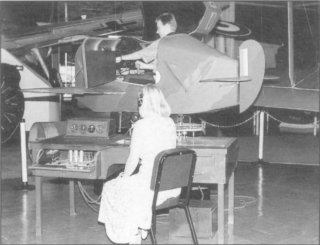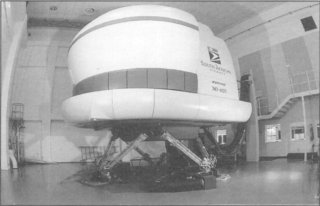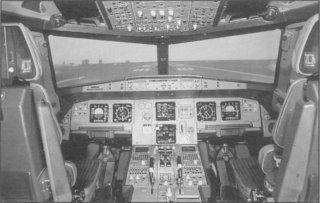

 The South African
The South African
The Link Trainer was the first form of flight simulator to go into service anywhere in the world. Both civil and military pilots were trained on Links from the 1930s until well after the end of the Second World War (1939-1945). For many years various inventors sought to produce a machine which could simulate on the ground the feel and movement of flying. It was an American flying instructor and manufacturer of automatic pianos, Edwin C Link, who finally produced such a device.
Initially, this was a very simple machine intended only for use in amusement parks and it was the forerunner of the plastic mechanical aircraft that, today, one finds outside supermarkets and in amusement arcades. However, with the advent of the need for pilots to acquire instrument flying skills particularly for commercial purposes, Link began to develop his trainer for the serious business of training civil and military pilots.
He collaborated with Casey Jones, a racing pilot, and with other flying instructors and engineers to produce the professional version of the trainer which became standard equipment in most flying schools, both civil and military. A miniature aeroplane with a wingspan of three metres, but with a full-sized cockpit, the Link was mounted on a turntable and could be tilted to simulate the normal movement of an aircraft around the three axes of roll, pitch and yaw. Air pressure was used to operate a series of bellows which moved the aeroplane realistically in accordance with the pupil's movement of his controls as well as the effects of throttle settings and aircraft attitude. Wind and turbulence effects could be introduced from the instructor's table. A full set of blind flying instruments, radio equipment and basic controls were provided and the pupil sat under a hood which prevented him from seeing outside his cockpit and heightened the illusion of flying which could become very real.
The trainer was connected to the instructor's table from which commands were given and the pilot was coached by voice radio or Morse code in the skills of instrument flying. A map covered with talc was mounted on the instructor's table, on which a small electric trolley called the 'Crab' traced out the path 'flown' by the pupil during an exercise. In this way, precision instrument flying could be practised on the ground.
Pilots also received basic flying instruction on the Link Trainer by using it with the cockpit open to accustom themselves to the feel of the flying controls. Since the trainer had no inherent stability, the pupil soon learnt the necessary sensitivity for smooth flying. Pupils also learnt the change in the effect of the controls in a steep bank and some of the essential differences between controlling an aircraft in three dimensions and driving a car in two dimensions. It could also be used to teach the Lorenz system of beam approach to an airfield which was widely used in Europe before and during the Second World War.

The Link Trainer at the South African National Museum of Military History in Johannesburg

Modern flight simulator of an SAA Boeing 747-400.
The Link is a far cry from the sophisticated machines in use today by both the air forces and the airlines of the world, but it nevertheless made a vital contribution to pilot training for a great many years. It is fair to say that Edwin Link's trainer was the first flight simulator to go into practical use and which started the route which has led to today's highly sophisticated and specialized equipment.

Interior of a modern flight simulator.
Return to Journal Index OR Society's Home page
South African Military History Society / scribe@samilitaryhistory.org